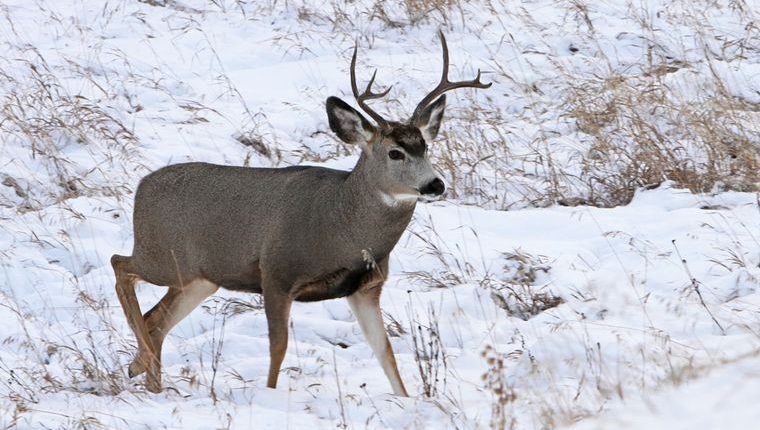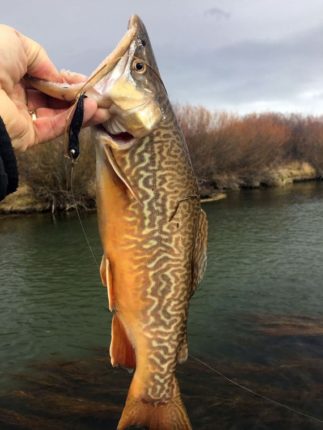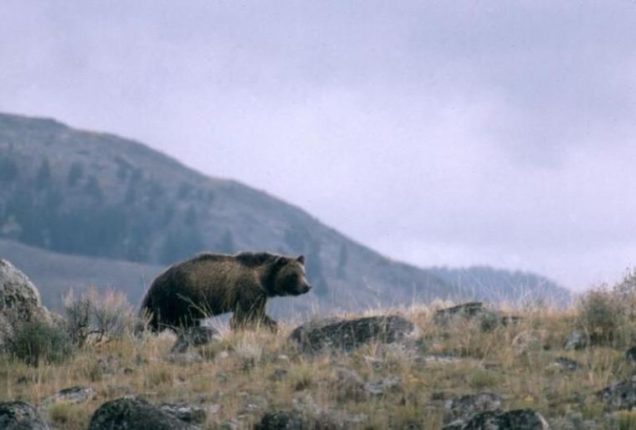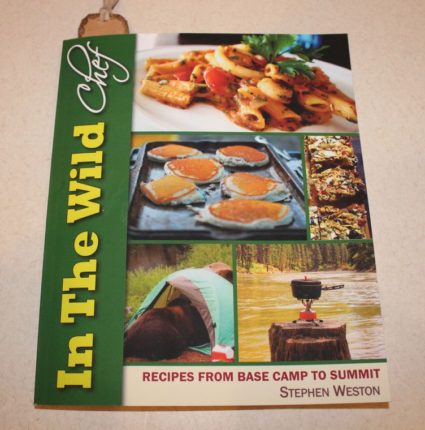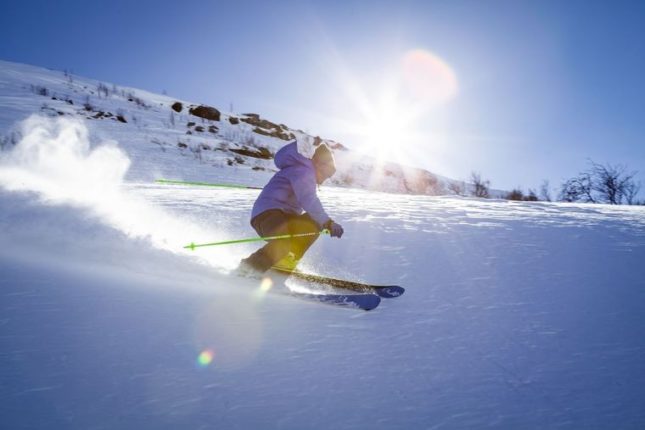Reintroduction of the Canadian gray wolf in Yellowstone National Park was considered a ecological victory for wildlife biologists in 1995, while other groups, including ranchers and big game outfitters, wondered why bringing an apex predator back after its elimination years earlier was a good thing.
The recent presence of tiger trout in the Teton River in Southeast Idaho is not so dramatic, though it has raised the collective eyebrow of both the angling community and Idaho Department of Fish and Game fisheries biologists.
“It’s interesting that in one of the last strongholds of the Yellowstone cutthroat trout (IDFG) would allow a non-native species to be stocked in this valley,” said Kim Keeley, Friends of the Teton River board member and a founding member of the Teton Valley chapter of Trout Unlimited. “Because it was sort of inevitable that (tiger trout) would get into the main stem of the Teton River.”
Unlike Yellowstone’s wolf population, tiger trout are sterile. A cross between a brown trout and a brook trout, the tiger trout has no ability to procreate, thus making it less of a threat to the native species, the Yellowstone cutthroat trout.
“We believe the impact to be minor and temporary, not long-lasting,” said IDFG fisheries biologist Brett High. “We believe they are in the river due to private pond leakage from Teton Springs, which has been permitted to stock tiger trout.”
While Teton Springs in Victor has tiger trout in ponds located through its golf course, High said reports of stocking tiger trout in ponds of other private properties in the Teton Valley are likely. Though the stocking requires a permit through IDFG, regulation and policing of such ponds, High said, is the bailiwick of the Idaho Department of Agriculture.
Sustained high water on the Teton River this past spring because of significant snow pack last winter may have provided a connection between stocked ponds and the river, allowing tiger trout to enter live water. However they got in the river, local outfitters confirmed the presence of the new species this year.
“We saw about six tiger trout on the Teton this year, and one of them was caught early in the season down in the narrows below Bitch Creek,” said Teton Valley Lodge owner and guide Brian Berry. “If they’re coming down from Teton Springs, that’s a long way to travel.”
Dave Heib of Three Rivers Ranch joined Fish and Game this past season on an electrofishing survey and witnessed three tiger trout in the net. For Heib, the presence of this invasive species is troubling.
“These fish are super carnivorous,” Heib said. “Even though they are sterile, nature has a way. The ones in the Teton now are going to be there for years. They’re probably munching on little cutty smolts right now.”
WorldCast Anglers, another local outfitter, reported clients catching at least three tiger trout in valley stretches of the Teton River.
A little trout history
Native cutthroats in the Teton River were joined by other invasive species of trout, according to High, as early as the turn of the century when the United States Federal Fish Commission introduced brook trout into area watersheds.
Idaho Fish and Game then added rainbow trout to the mix, stocking the Teton until the mid 1990s. Though no stocking of brown trout was ever initiated by IDFG, High said a recent electrofishing, a process of surveying the fish population in a river, revealed a high percent of brown trout in the Teton, along with a tiger trout, which was removed from the watershed.
There is no evidence to support interbreeding of brook or brown trout, which share the same spawning season. But with the native cutthroat, High said rainbows and cutthroat have been interbreeding for so long in the Teton River that he had no idea how many generations of the hybrid cutbows exist. And though he doubted there are any pure rainbows in the Teton, High said genetic testing has proven there are plenty of pure cutthroats still in the Teton.
“There has been a lot of introgression, but there is still pretty good purity with the cutthroat,” High said. “We have wondered about the impact of stocking on the genetics of wild cutthroat trout all across the region. Bottom line is it appears that our wild cutthroat genetics are still intact because the geneticists found distinct groupings of cutthroat trout by river drainage that had different genetics by drainage.”
On the South Fork, another aspect of the Upper Snake River watershed, High said rainbow trout were stocked from around 1940 to 1981, brown trout from 1968 to 1982, and cutthroats from 1950 to 1981. The cessation of stocking, according to High, was due to survey feedback from anglers.
“Every few years, Idaho Fish and Game has done these opinion surveys,” High said. “That’s a lot of what drives our management policies.”
Teton Tigers
Though sterile, tiger trout have become a popular species for stocking programs because of their fast growth rate and aggressive or piscivorous nature. Time will tell the overall impact of tiger trout on the Teton River, but for now those in charge of the fisheries’ management are not too concerned.
Dan Garren, Regional Fisheries Manager for Fish and Game’s Upper Snake River office, recently contacted Teton Springs to double check that their ponds are secure, though other stocked ponds may be to blame for this new species in the Teton.
“I’ve contacted Teton Springs, and they are checking to ensure their screens are functioning properly, and say that they have a fishery biologist who does monthly inspections on their place to ensure compliance,” Garren wrote in an email. “If they are not the source of these fish, then there is some illegal stocking occurring somewhere up there. Once I hear from Teton Springs again and they ensure their screens are not to blame, I will contact the hatchery directly and see if we can figure out what’s going on.”
In the meantime, Garren said anglers are welcome to try and harvest a few tiger trout.
“As for what to tell anglers, we’re not overly concerned with tigers in the Teton at this point,” Garren wrote. “Not that we want them in there (we don’t), but they are a sterile fish so cannot establish a wild population. They are rare enough that nobody really knows how they ‘fit’ into the landscape, and what impacts they may or may not have with our cutties and other species. But they are in sufficiently low densities that any impacts will be minor, and temporary. Also tell any anglers that per IDFG rules, the daily bag limit is six tiger trout per angler. If they feel inclined, enjoy a shore lunch of a rare hatchery fish…”
